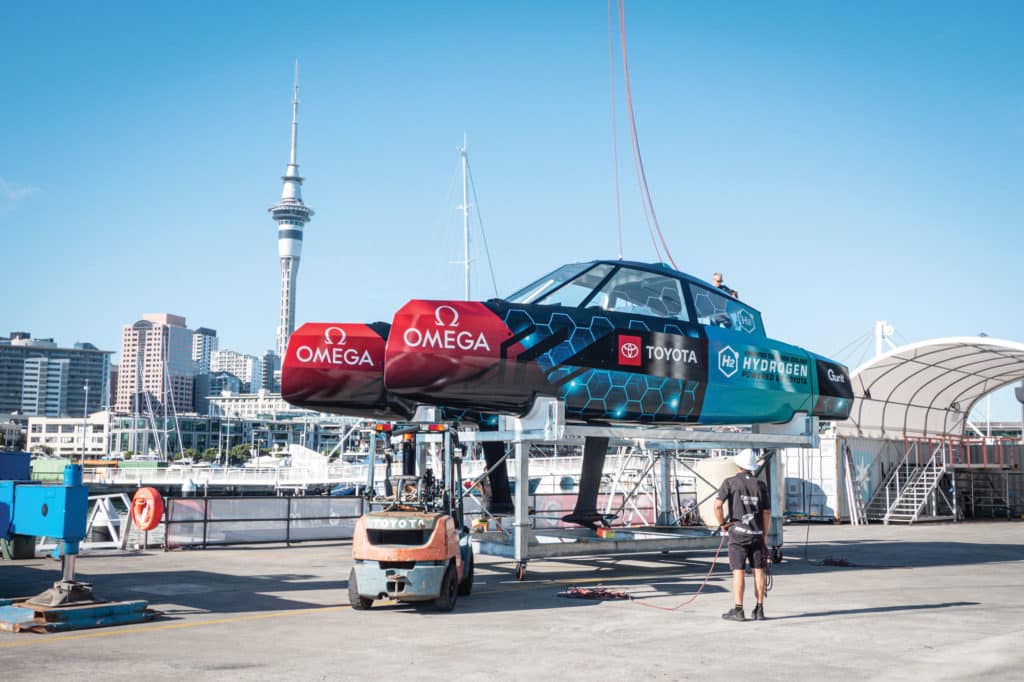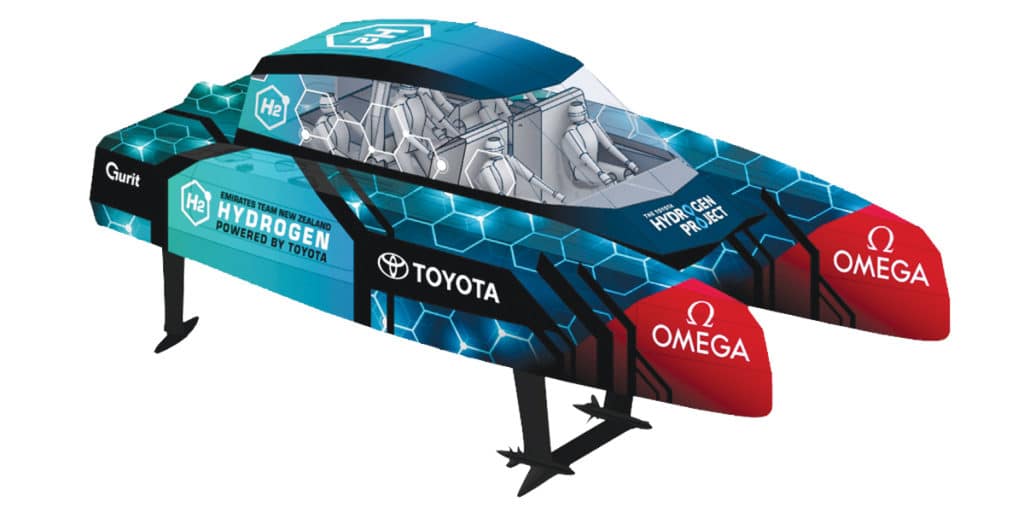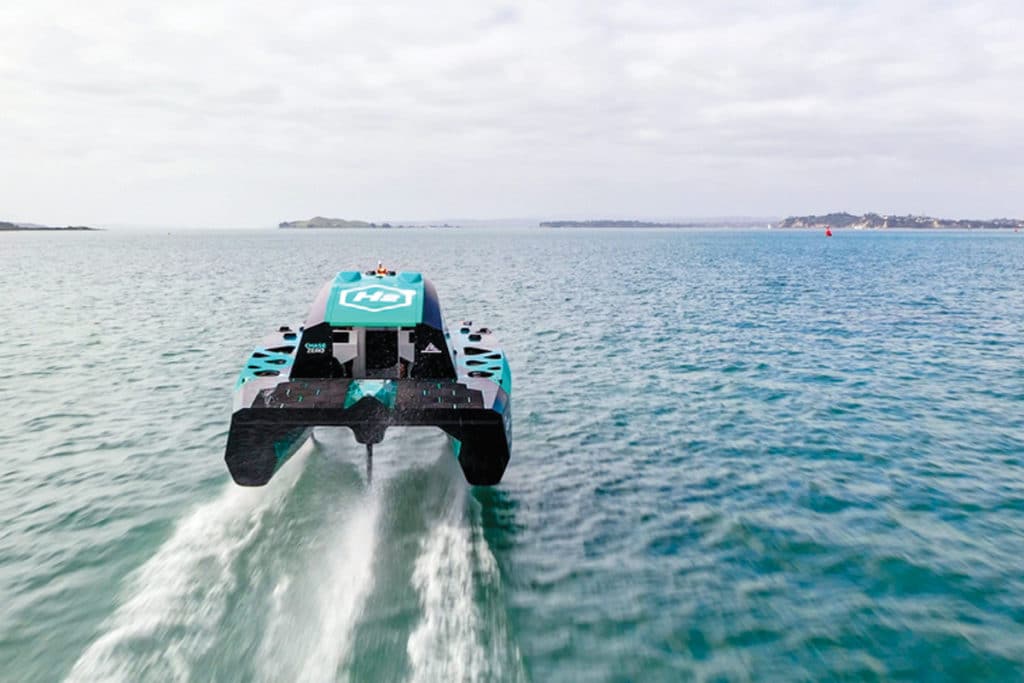
Emirates Team New Zealand’s Chase Zero is the world’s first hydrogen-powered and hydrofoil-equipped catamaran. The team designed and built it as a prototype chase boat for the 37th America’s Cup. The high-performance foiler is held aloft by two connected hydrofoils that extend downward via struts from the hull at midship, and by a rudder and static elevator assembly. The boat’s autopilot handles flight control by articulating the flaps on the trailing edges of the hydrofoils and by trimming the rudder’s rake angle.

The team’s biggest challenge in building Chase Zero was time lost to pandemic-driven quarantines and supply-chain disruptions. It applied its 29-year history of innovation to those problems. “In our day job of competing for the America’s Cup, we have to be able to turn concepts into working engineering solutions extremely quickly,” says Dan Bernasconi, the team’s head of design. “We have developed tools and processes that allow for this rapid development, and we have a very solid engineering team.”

Under the Hood
Chase Zero’s cruising speed is 35 knots, but it can reportedly do 50-plus knots. Thrust is generated by twin 80 kW Toyota prototype fuel cells and twin electric motors (one per hull) that spin Mercury Bravo I propellers. Each fuel cell creates DC power that’s either consumed by the motors or banked in lithium- ion batteries. Chase Zero’s daily working range is 100 nautical miles, and it emits only water. While Emirates Team New Zealand isn’t a mass-production boatbuilder, its head of design says the team may supply the design to other America’s Cup teams or to a production builder.
Take the next step: emirates-team-new-zealand.americascup.com









